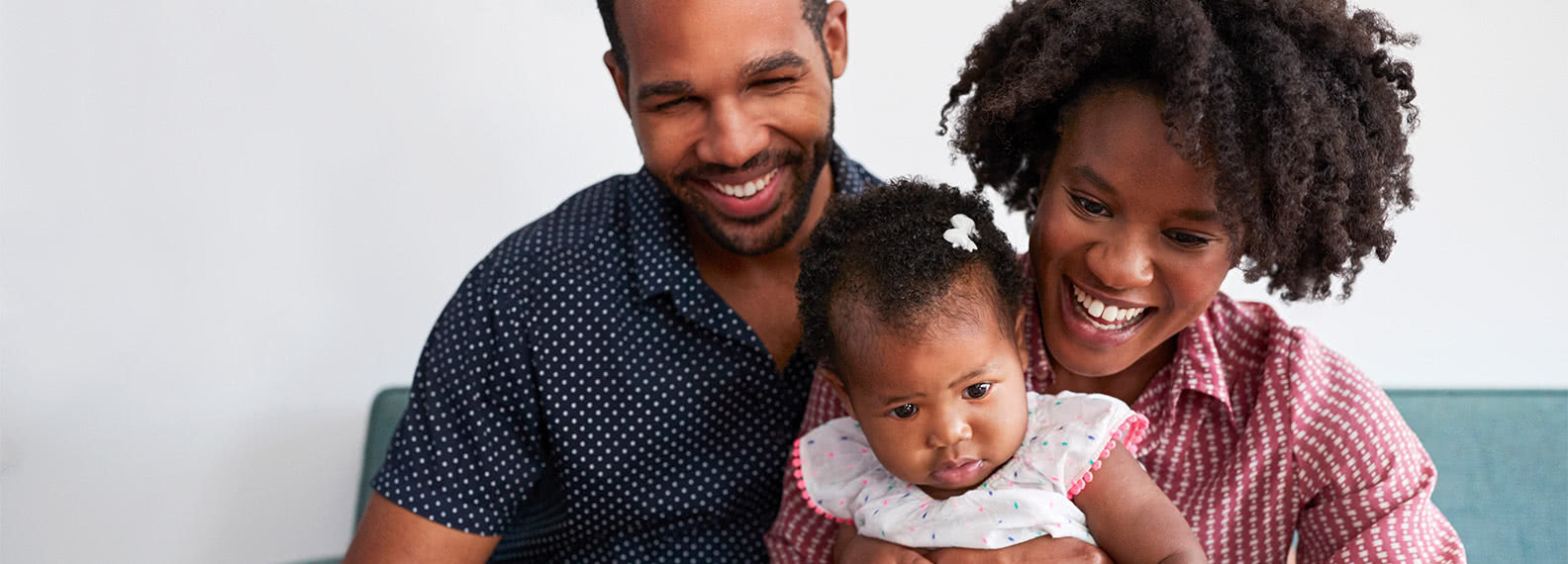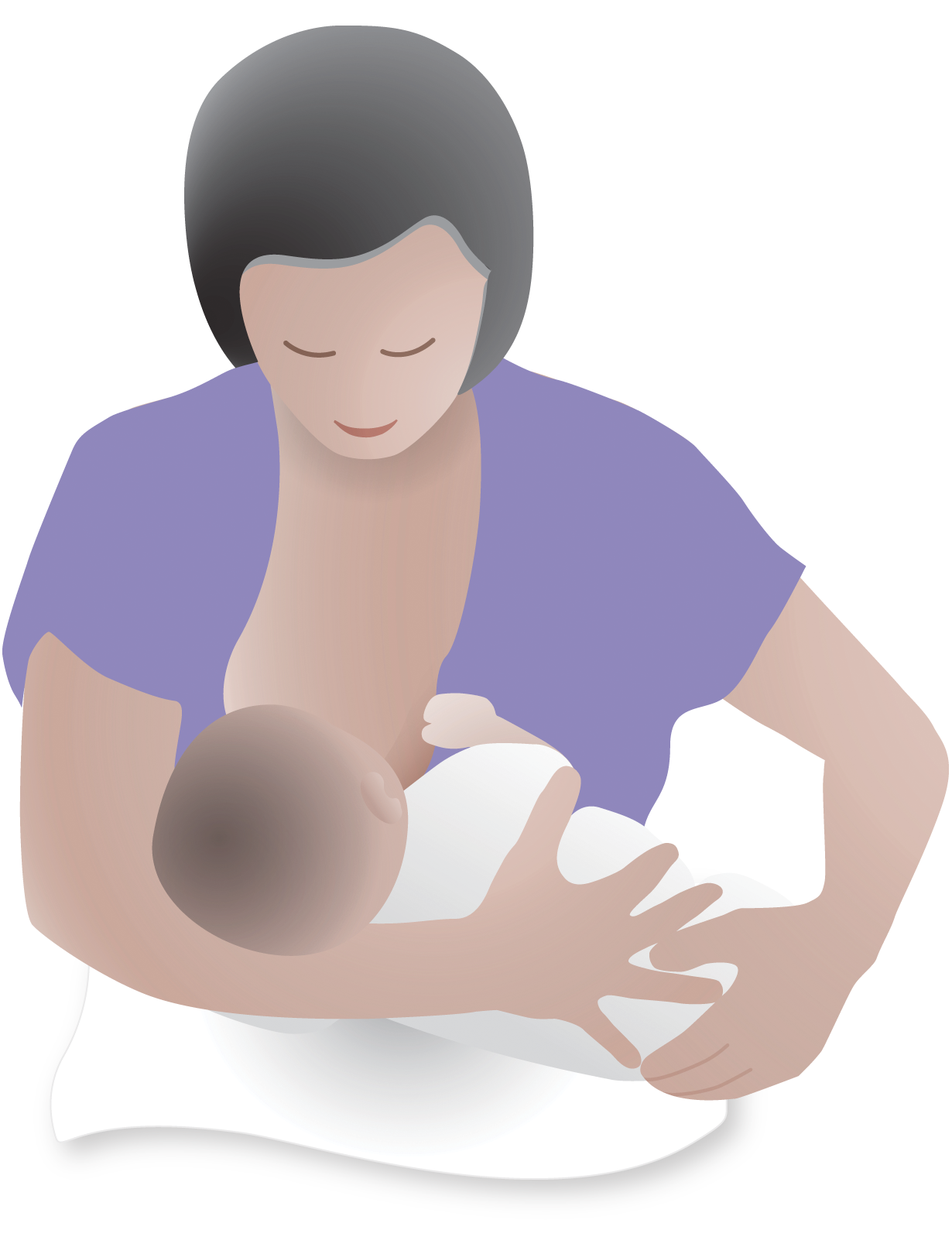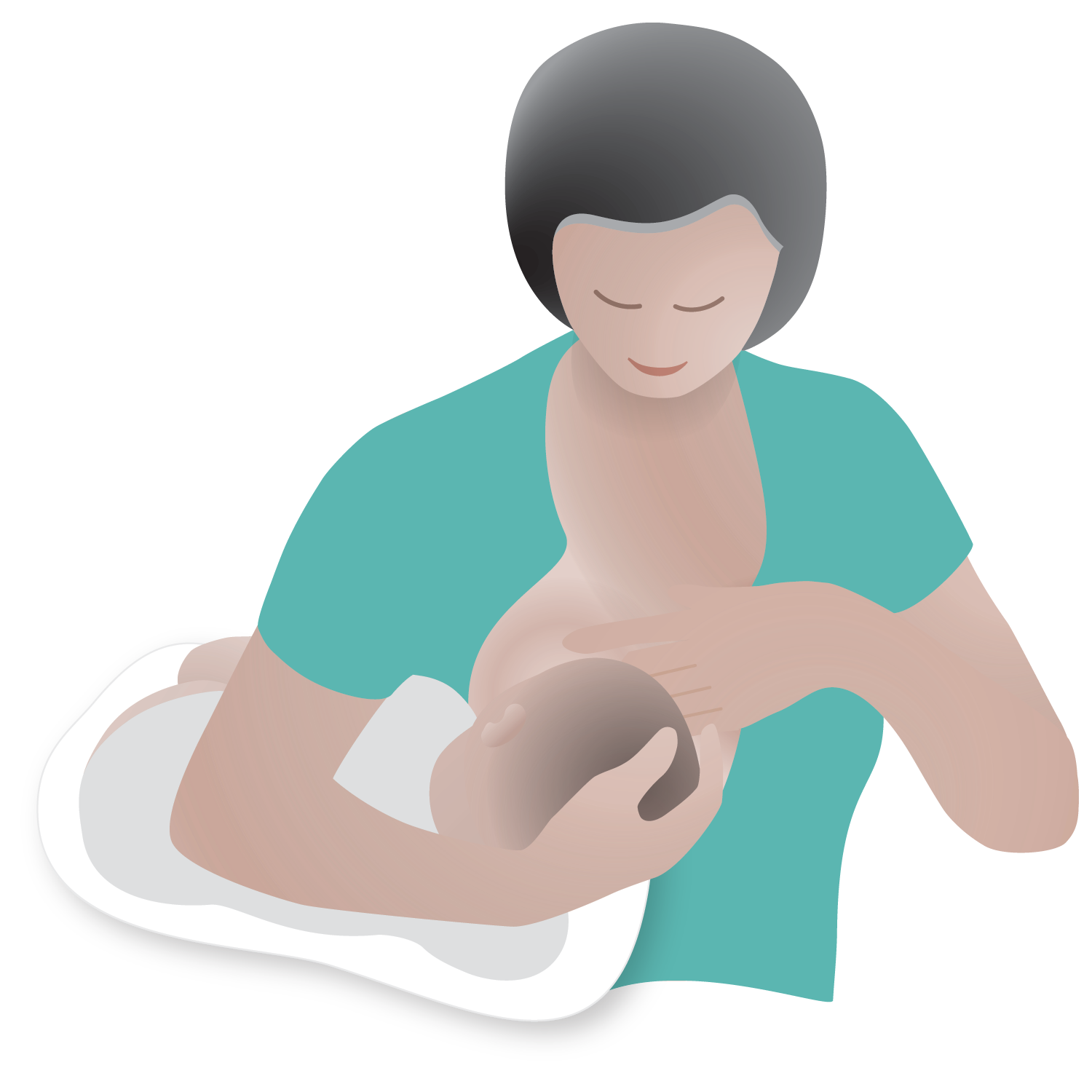
Section
Feeding Your Baby
Breastmilk is the best food for babies. It helps them grow and protects them from colds, infections, allergies, asthma, obesity, and diabetes. It is best for moms, too. It helps your body recover from birth. It lowers your risk of breast cancer. And it helps you form a close bond with your newborn. With patience and practice, almost every mother can breastfeed.
Where to Find Help
Advice and classes on breastfeeding and healthy eating; food coupons for women with low incomes.
1-800-852-5770
Information from the American Academy of Pediatrics on children’s health, safety, and well-being.
Things You Can Do
Prepare for Breastfeeding
Many hospitals have breastfeeding experts who can help you get started.
Have your baby lie skin-to-skin on your chest after the birth.
Try breastfeeding within an hour after birth.
Your first milk, called colostrum, is extra rich.
Don’t offer a bottle or pacifier at first. This makes it harder for a baby to learn to breastfeed.
While You Are Breastfeeding
Do not smoke or vape while you are breastfeeding. Your baby will get nicotine and other harmful substances from your breastmilk.
Alcohol goes into breastmilk. If you have any alcohol, wait 2 to 3 hours before breastfeeding.
If you take any medicine, ask your doctor if it is safe to take while you are breastfeeding.
If you think something you eat is upsetting your baby, try not to eat it for a while. If the problem does not go away, talk to your doctor.
Breastfeeding Tips for Working Moms
Breastfeed through your maternity leave. Then breastfeed before and after work.
You can use a breast pump or express your milk by hand. Your workplace should have a private room that you can use.
You can refrigerate breastmilk for up to 72 hours.
You can freeze breastmilk for 3 to 6 months. Thaw it in the refrigerator.
Breast pumps are covered by insurance.
If You Need Help to Breastfeed or Get Formula
For advice and classes on breastfeeding, call La Leche League or WIC. You can get WIC vouchers (“checks”) for formula.
Tips for Breastfeeding
Make sure your baby’s head, shoulders, and hips are all facing you.
Your baby’s mouth should cover the areola, the dark area around the nipple.
Feed on one breast until it is empty—about 10 to 20 minutes. Then burp your baby and switch breasts.
If your breasts are swollen and tender, or they leak, try to breastfeed more often.
If you still have sore nipples after the first few weeks, your baby may not be latching on right. Talk to your doctor or a breastfeeding expert.
Breastfeeding Positions
Laid Back

Lie back with good back support. Your baby faces you, tummy-to-tummy, and her mouth is on top of your breast. This is a good position for babies learning to breastfeed.
Cradle Hold

Hold your baby across your stomach, with her head in the bend of your elbow. You and your baby are tummy to tummy. You can also support your baby with your other arm.
Side Hold

Place your baby on a pillow at your side and use one hand to bring her head to your breast. This position is good for small babies or mothers who have had a C-section.
How Often Should I Feed My Newborn?
Feed her when she is hungry, not on a schedule. Watch for signals that she is hungry. She may suck her hand or try to breastfeed. She may start to cry. Most newborns need to be fed every 1 to 3 hours during the day and at night.
Is My Baby Getting Enough Milk?
Keep track of your baby’s diapers. If your baby wets 4 to 6 disposable or 6 to 8 cloth diapers and has 3 to 4 poopy diapers in 24 hours, that usually means she is getting enough breastmilk.
If You Bottle-Feed
If you need to bottle-feed your baby, do not put anything except formula or breastmilk in her bottle. Follow the instructions on the package carefully when you mix and warm up formula. Formula spoils quickly. Don’t mix more than your baby will drink at one time. Throw away any formula left in the bottle. Newborns usually drink 1.5 to 3 ounces per feeding. As she grows, this amount will slowly increase.